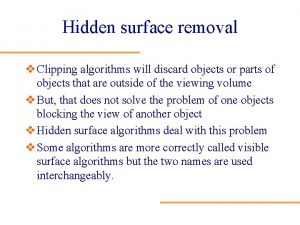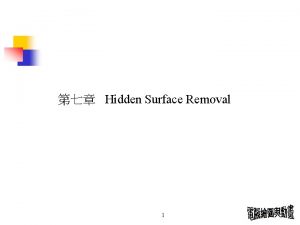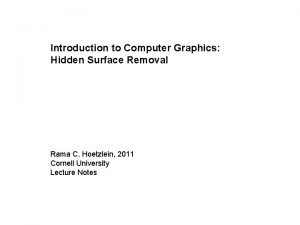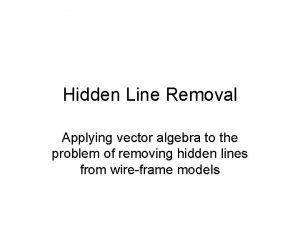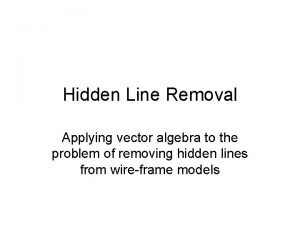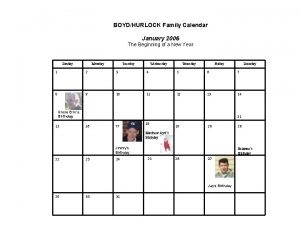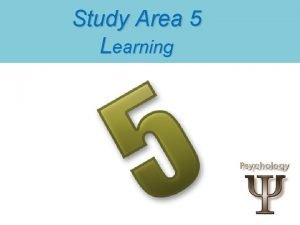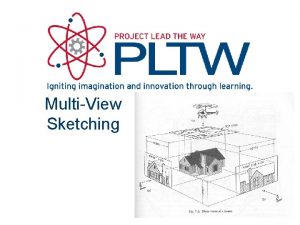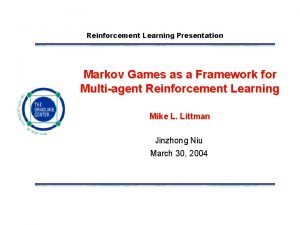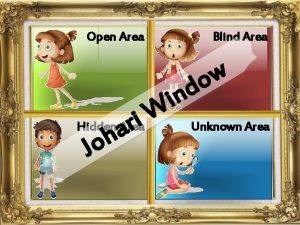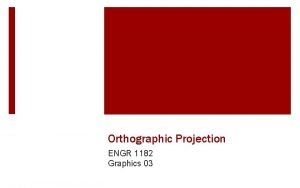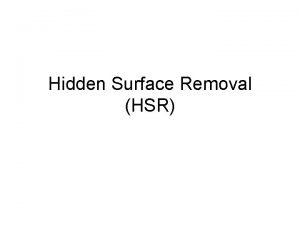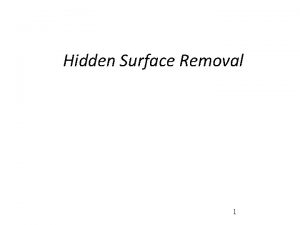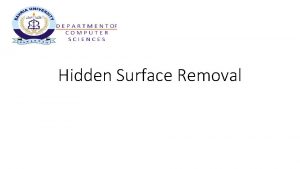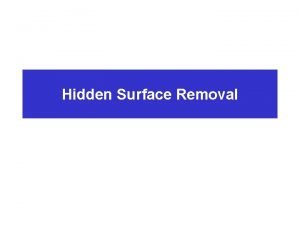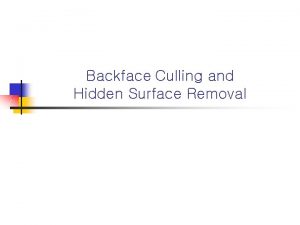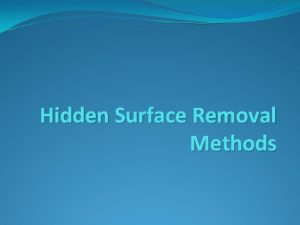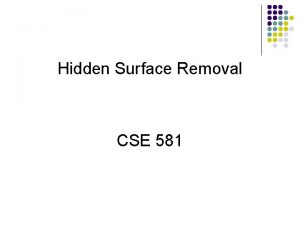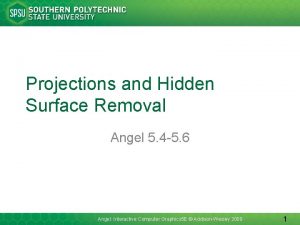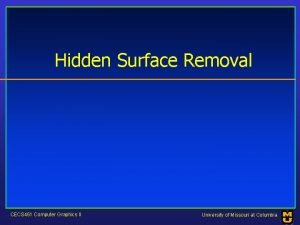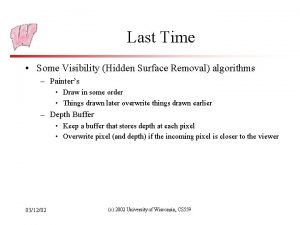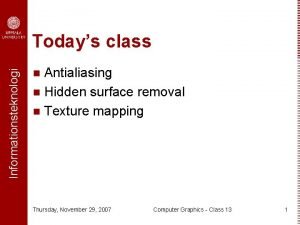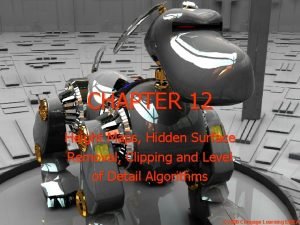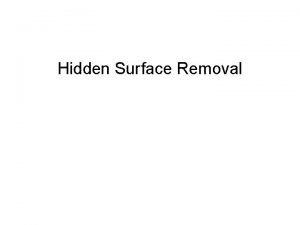Hidden Surface Removal April 27 2006 Assignment 4

















- Slides: 17

Hidden Surface Removal April 27, 2006

Assignment 4 Hints • Ed Angel 5. 9. 2: • Shear or Translation? • Using only integers in Bresenham’s?

Hidden Surface Removal • Object-space algorithms: – Back-face culling (removal) – Depth sorting and Painter’s algorithm • Image-space algorithm: – Z Buffer! – Fast, but requires more memory.

Back-Face Culling • For convex objects, we can’t see the back faces. • But, how do we determine the back faces?




Painter’s Algorithm • Draw from back to front. • No solution for: – Cyclic ordering – Intersecting surfaces

Z Buffer • At each pixel, store the Z of the frontmost surface. • If the new Z is larger, it’s occluded. • If the new Z is smaller, then: – Draw the new surface – Update the Z

Other Algorithms • Scan-line algorithm: See Section 7. 11 of Ed Angel’s book (4 th Ed). • For more advanced research in this area, see: – Chen and Wang, SIGGRAPH 1996. – Snyder and Lengyel, SIGGRAPH 1998.

from the previous lecture…

Projection Matrix

Range of Z • If Z = near, what is Z’? -1 • If Z = far, what is Z’? 1 • Does Z’ change linearly with Z? – No! – Z’ = w. Z’ / w = (a*Z+b) / Z = a + b/Z

Z Resolution • Since screen Z’ is expressed in the form of a+b/Z, most of the Z resolution is used up by the Z’s closer to the near plane. • So, what does this mean? • You shouldn’t set z. Near to be very close to the eye position.

Near=10 Far=1000 Near=100 Far=1000 Notice the change in the range of Z after transformation (in NDC space) for the original Z (in eye space) between 200 and 400 (marked by the Red boxes).

Why Not Linear? • To make it linear, we will have to make WZ’ = a*Z 2 + b. Z (so that Z’ = WZ’/W = a*Z + b) • But that’s impossible with the perspective matrix…

Linear Z Buffer or W Buffer • Wait! Why is linear Z impossible under perspective projection? Can’t we simply ignore the divide-by-w step for Z? • Yes, but we no longer have the nice math of the homogeneous coordinates Division by w
 Some polygons
Some polygons Hidden line removal algorithm
Hidden line removal algorithm Hidden surface removal in computer graphics
Hidden surface removal in computer graphics Hidden line removal
Hidden line removal Hidden line removal
Hidden line removal Paula hurlock birthday
Paula hurlock birthday School year 2005
School year 2005 High surface tension vs low surface tension
High surface tension vs low surface tension Wet curved surface area
Wet curved surface area Lateral surface area formulas
Lateral surface area formulas Dog bite pictures
Dog bite pictures Drawing learning objectives
Drawing learning objectives Hidden markov model rock paper scissors
Hidden markov model rock paper scissors Hidden area
Hidden area Hidden line drawing
Hidden line drawing Hidden costs of assisted living
Hidden costs of assisted living Figure of speech comparison
Figure of speech comparison Among the hidden chapter questions
Among the hidden chapter questions
